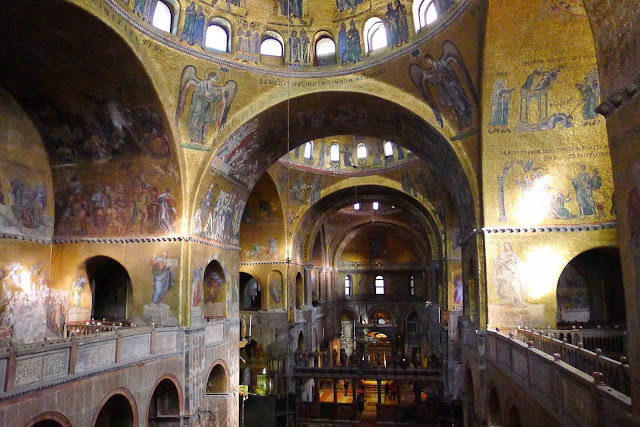Plaza de Espana: A Tribute to the Spanish Empire
At the peak of its height, the Spanish Empire ruled supreme over territory that now includes Western and Southern United States, Mexico, half of South America, the Philippine Islands, Naples and Southern Italy, and the Low Countries (Netherlands and Belgium).
To showcase the diversity and cultural richness of its formerly vast and far-reaching empire, Spain held the Ibero-American Exposition in 1929 with the city of Seville playing its host.
* And at the center of the Exposition, stood the splendid Plaza de España, one of Sevilla's main landmarks and an icon of Spanish tourism.
* The Ibero-American Exposition was a perfect example of a WORLD'S FAIR, which was an international gathering of exhibits featuring the products, achievements, and peoples of different countries and exotic locales.
* And it was a relic of a bygone era of wonder and amazement for other countries' culture and technology; before advancements in travel and communication made the dissemination of information much more convenient and cost-effective.
* The Plaza de España complex is made up of tiled alcoves, each representing the different provinces of Spain.
* As you can see, the Plaza is also very picturesque!
* So picturesque that numerous movies have been shot here through the years including: Lawrence of Arabia, Star Wars Episode 2 (for scenes in Naboo), and The Dictator.
* Countries that actually had exhibits for the Ibero-American Exposition included: Portugal, the United States, Mexico, Brazil, Peru, Argentina, Chile, Uruguay, Colombia, Venezuela, Dominican Republic, Bolivia, Panama, Ecuador, El Salvador, and Cuba.
* Las Islas Flipinas, represent!
* The area around Plaza de España also offers numerous photo-op locations. One is the colorful edifice of the Palace de San Telmo, a former university for navigators, built on land owned by the Tribunal of the Holy Office (the infamous Spanish Inquisitors).
* Another is this outstanding statue of El Cid, warlord of the medieval Spanish kingdom of Castille and most celebrated hero of Spain. El Cid was known for his military genius, exemplified by his leading of the Christian armies during the Reconquista, the retaking of lands conquered by the Muslims.
* Yet another is this building belonging to the Captain General, commander-in-chief of the Spanish Army, which looks like a set piece to a Zorro movie.
* After the Exposition, most of the buildings erected became the consulates of those representative countries to the region of Andalusia, which Seville is the capital of.
* Still, a lot of the works of art remain to this day, including this peculiar looking pillar.
* As well as this pillar representing a Spanish Galleon, symbolic for how the Spaniards came to conquer, colonize, and trade with the rest of its Empire.
* Seville is also home to a statue of religious significance.
* Found at the Basilica of our Lady of Hope of Macarena, the statue of the Virgin Mary, commemorates her grief and piety during the events of the Christian Holy Week.
* As such, La Macarena, as she is fondly referred to, is considered a national treasure in Spain. In fact, "Macarena" is the most popular name for females across Andalusia.
* La Macarena is also the patroness of bullfighters; with bullfighting being considered the national pastime of Andalusia.
* Una cerveza, por favor!























Comments
Post a Comment